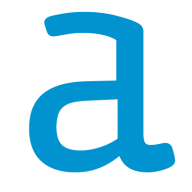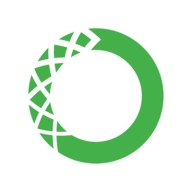


Find out what your peers are saying about Alteryx, Altair, SAP and others in Predictive Analytics.



Alteryx can be used to speed up or automate your business processes and enables geospatial and predictive solutions. Its platform helps organizations answer business questions quickly and efficiently, and can be used as a major building block in a digital transformation or automation initiative. With Alteryx, you can build processes in a more efficient, repeatable, and less error-prone way. Unlike other tools, Alteryx is easy to use without an IT background. The platform is very robust and can be used in virtually any industry or functional area.
With Alteryx You Can:
Alteryx Features Include:
Some of the most valuable Alteryx features include:
Scalability, stability, flexibility, fast performance, no-code analytics, data processing, business logic wrapping, scheduling, ease of use, data blending from different platforms, geo-referencing, good customization capabilities, drag and drop functionality, intuitive user interface, connectors, machine learning, macros, simple GUI, integration with Python, good data transformation, good documentation, multiple database merging, and easy deployment.
Alteryx Can Be Used For:
Alteryx Benefits
Some of the benefits of using Alteryx include
:
Reviews from Real Users
"Automation is the most valuable aspect for us. The ability to wrap business logic around the data is very helpful." - Theresa M., Senior Capacity Planner at a financial services firm
"Alteryx has made us more agile and increased the speed and effectiveness of decision making." - Richard F., Director, Digital Experience & Media at Qdoba Restaurant Corporation
"The scheduling feature for the automation is excellent." - Data Analytics Engineer at a tech services company
"The product is very stable and super fast, five-star. It's significantly more stable than its nearest competitor." - Director at a non-tech company
“A complete solution with very good user experience and a nice user interface.” - Solutions Consultant at a tech services company
"There are a lot of good customization capabilities." - Advance Analytics PO at a pharma/biotech company
Anaconda makes it easy for you to install and maintain Python environments. Our development team tests to ensure compatibility of Python packages in Anaconda. We support and provide open source assurance for packages in Anaconda to mitigate your risk in using open source and meet your regulatory compliance requirements.
Python is the fastest growing language for data science. Anaconda includes 720+ Python open source packages and now includes essential R packages. This powerful combination allows you to do everything you want from BI to advanced modeling on complex Big Data
Teradata is a scalable data analytics platform designed to meet enterprise demands for large-scale data management and processing, focusing on performance, scalability, and security for complex query executions.
As a leading data warehousing solution, Teradata integrates advanced analytics enabling organizations to derive insights from massive datasets. It supports high-volume data workloads with its architecture optimized for analytical queries. Users benefit from its robust scalability, allowing seamless expansion as data grows. Teradata's SQL engine is compatible with a wide range of data types, ensuring flexibility in data analysis. With advanced security measures, it protects sensitive data across various environments, providing peace of mind to users handling critical information.
What are the most important features of Teradata?Teradata is widely used in industries like finance, telecommunications, and healthcare, where data-driven decisions are critical. Companies leverage its robust analytics capabilities to enhance customer experiences, streamline operations, and ensure compliance with regulatory requirements. In these sectors, quick access to data insights can significantly impact competitive advantage.